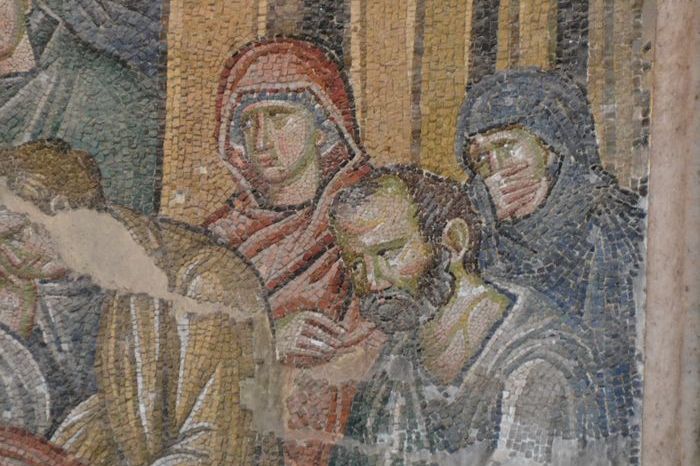The fourth and last piece of advice that even a contemporary might have given Justinian and that he should have heeded was straightforward—to take his religion a little less seriously. The natural wealth and strength of the oddly configured empire that Justinian inherited lay in the south and east, in the larger Syria behind Antioch and the larger Egypt behind Alexandria. Justinian came to power with one religious idea—support for Chalcedon—and promoted it relentlessly. He managed by the end of his reign to confirm Egypt in its alienation and hostility to the throne and his religion, and to see Syria turned decisively against the metropolis as well; both became hotbeds of monophysitism.
On a churchly balance sheet, Justinian could take comfort in the flourishing of Chalcedonian ideas in the heavily subsidized city of Jerusalem and its neighboring monasteries, and he built a huge new church adjacent to the Temple Mount there, again rivaling Solomon. He also had to accept, however, that the other form of Christianity he thought most deviant, Nestorianism, fled across the frontier to Persia and became effectively the official form of Persian Christianity from that time forward. Medieval and early modern travelers to the eastern realms, such as Marco Polo, found Christianity there ahead of them, but mainly in the forms Justinian had banned, for so it was that the gospel reached to those ends of the earth.
In the end, it was his religious obsession more than anything else that enabled Justinian to kick away his opportunities and to leave his successors with few choices except to muddle and manage in the world he had ruined.
Talk about a tough act to follow.
Wars Worse Than Civil
When we come to Justinian’s wars, we must be students of Procopius, but we must read him cautiously.
Procopius saw perfectly well that Justinian never fought a war he should have fought and that he was eager to fight the ones he needn’t have ventured, rivaling in his ambitions (but not his successes) the emperor Trajan 400 years earlier. Justinian also never finished one war before starting another, and he had an infinite capacity to deny, to himself and to the world at large, the catastrophic failures that followed his adventures. The Persian wars could be made to seem a stalemate, with only a little stretching of the truth; the African wars could be made to seem successful, as long as one ignored a pesky and continuing insurgency; and the Italian wars could be made to seem a triumph of long- suffering and patient government, until the reader realized that a war lasting ninteen years and resulting in no stable regime for the nation, which had given its blood offerings and seen its cities ravaged, was anything but a success istanbul day tour.
Read aright, the stories that Procopius tells, and that I will recount as succinctly as possible, are the public chronicle of the flagrant self-inflicted ruin of the Roman empire.
ALL QUIET ON THE EASTERN FRONT
During the fifth century Persia had been preoccupied with affairs on its own eastern front, as the Hephthalites—who made their home between Persia and India, in lands again acutely troubled today—sorely pressed on Persia’s most vulnerable approaches much as they did on the Gupta empire of India. The Hephthalites supported implicitly the long reign of Kavadh I (488-531, with interruptions), allowing him to pay more attention to the prosperous western part of his empire. Anastasius was the first emperor in decades to see Persian activity, but he controlled the frontier with a few skirmishes and with an enlightened public works project: building the frontier post—almost a city—of Daraa in 506, and granting it his own name, Anastasiopolis. From that fortified location, Roman troops monitored the border and maintained arm’s-length relations with the Persians beyond Coming down through the Caucusus.
The stories Procopius has to tell of Justinian’s Persian wars, by contrast, mainly represent the period of obtuse skirmishing in the late 530 s, starting up north in the Caucasus and scattering along the border. A Persian historian of the same period would pay much less attention to these events, and we have to bear in mind that one of Procopius’s intentions is to show us the arrival of the Persian king Khusro as the heroic antithesis of Justinian. (Khusro reigned 531-579; thus he and Kavadh controlled Persia for just over ninety years.) The wise and brave emperor who leads his forces to victory offers at every turn an implicit rebuke to Justinian, hiding in his palace.







